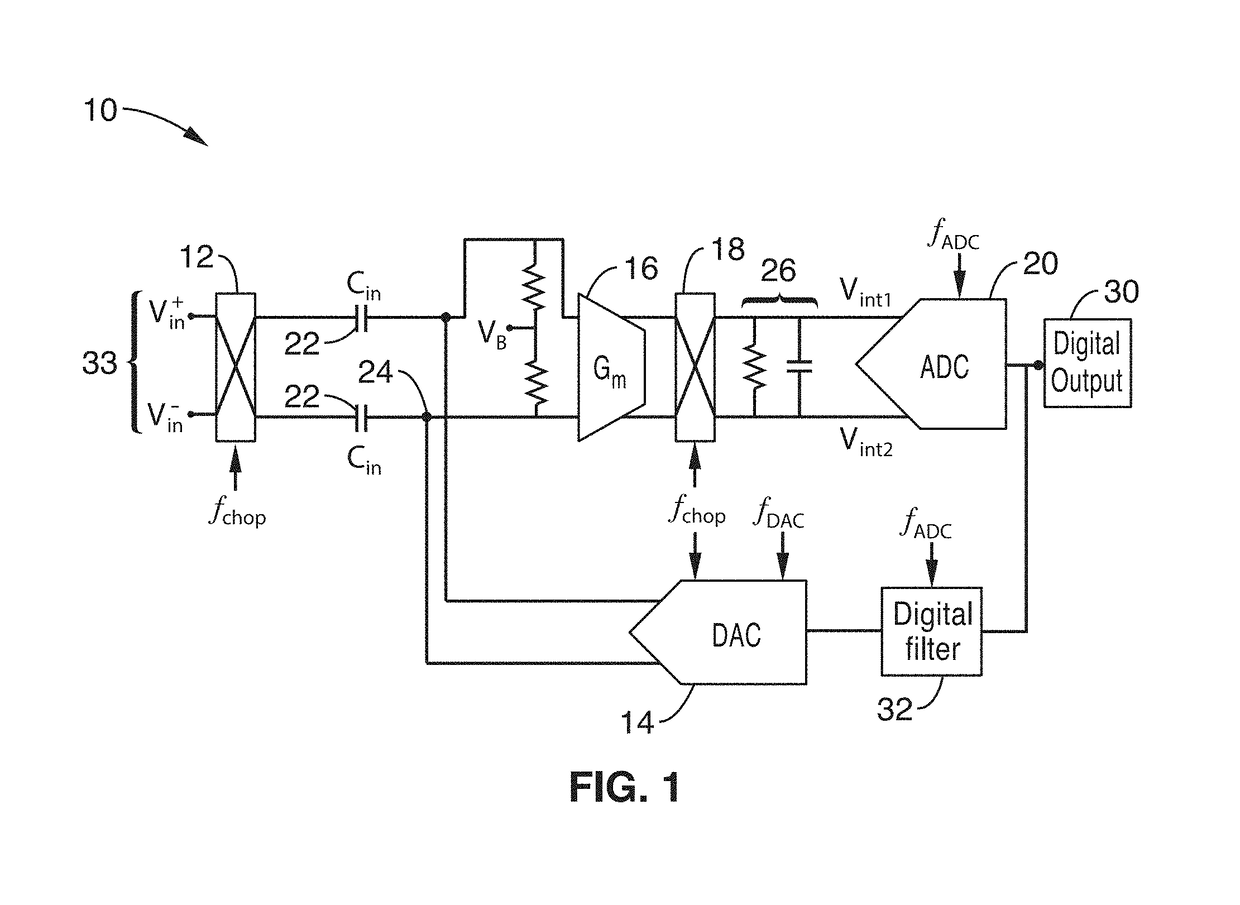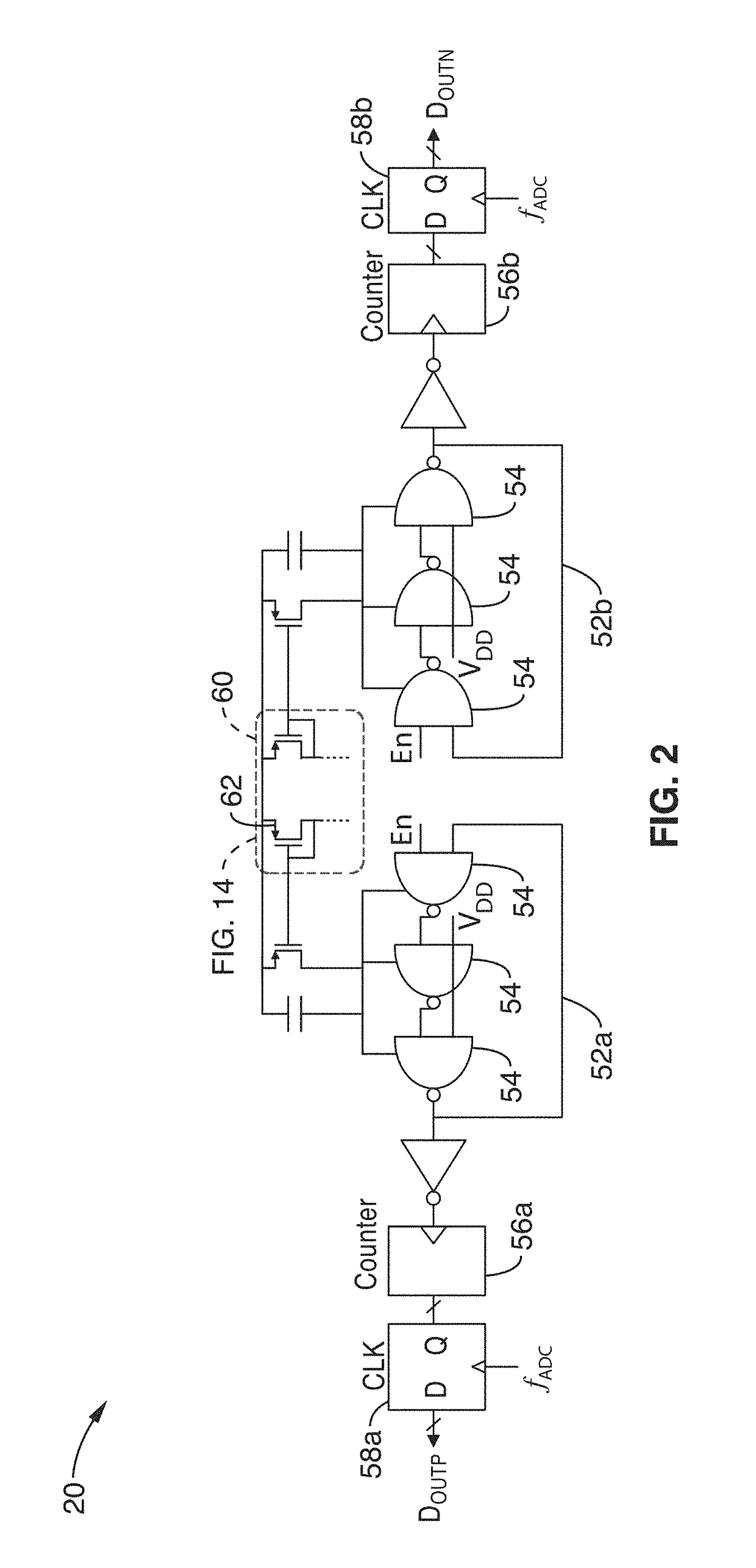Systems and methods for electrocorticography signal acquisition
a signal acquisition and electrocorticography technology, applied in the field of signal acquisition, can solve the problems of uneconomically large electronics footprint and impracticality of arrayed implementations beyond eight amplifiers
- Summary
- Abstract
- Description
- Claims
- Application Information
AI Technical Summary
Benefits of technology
Problems solved by technology
Method used
Image
Examples
Embodiment Construction
[0042]The present disclosure is directed to circuit architectures and methods for neurological and biological signal acquisition such as electroencephalography (EEG) electrocorticography (ECoG). By way of example and not of limitation, a functional block diagram for an improved architecture for an ECoG front-end (e.g. amplifier / digitizer system) 10 according to one embodiment of the invention is shown in FIG. 1.
[0043]The ECoG front-end 10 illustrated in FIG. 1 generally comprises a chopper-stabilized, open-loop amplifier. The amplifier comprises input up-modulation chopper switches 12, a Gm stage 16, down-modulation chopper switches 18 and an R-C filter load 26. The output of the amplification stage 33 is connected to an ADC 20. In a preferred embodiment, the ADC 20 comprises a VCO-based ADC. Shown in greater detail in FIG. 2, VCO-ADC 20 uses a voltage to current converter to drive a ring oscillator 52a / 52b whose output is fed into a counter 56a / 56b for quantization. The quantizatio...
PUM
 Login to View More
Login to View More Abstract
Description
Claims
Application Information
 Login to View More
Login to View More - R&D
- Intellectual Property
- Life Sciences
- Materials
- Tech Scout
- Unparalleled Data Quality
- Higher Quality Content
- 60% Fewer Hallucinations
Browse by: Latest US Patents, China's latest patents, Technical Efficacy Thesaurus, Application Domain, Technology Topic, Popular Technical Reports.
© 2025 PatSnap. All rights reserved.Legal|Privacy policy|Modern Slavery Act Transparency Statement|Sitemap|About US| Contact US: help@patsnap.com



